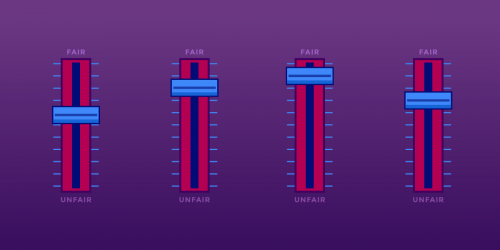In re Bilski (captioned Bilski v. Kappos at the Supreme Court) is an appellate court case dealing with the patentability of business method patents.
By way of background Bernard Bilski and Rand Warsaw applied for a patent on methods for hedging risks for commodities trading. The Patent Office rejected their patent application as covering an abstract idea not eligible for patent protection under § 101 of the Patent Act. Bilski appealed to the U.S. Court of Appeals for the Federal Circuit (CAFC) which hears all patent appeals.
The CAFC took the somewhat unusual step of ordering an en banc rehearing of the In re Bilski case. The CAFC perhaps wished to revisit its controversial 1998 decision in State Street Bank & Trust Co. v. Signature Financial Group which opened the doors to patents for novel methods of doing business. That ruling knocked patent law loose from its historical moorings and injected patents into business areas where they were neither needed nor wanted. The results had been nothing short of disastrous: a flood of patent applications for services like arbitration tax-planning legal counseling charity fundraising and even a “system for toilet reservations.”
In the CAFC EFF submitted an amicus brief (in conjunction with The Samuelson Law Technology & Public Policy Clinic at UC Berkeley Law Public Knowledge and Consumers Union) supporting the rejection of Bilski's patent application and setting forth a framework for determining patentable subject matter that focuses on the use of technology in the claimed invention. EFF's brief proposed that the Patent Office and the courts should determine whether an invention is technological before even considering it for patent protection and lays out a set of factors to help make that determination. This litmus test would have helped ensure that the patent system is not used to monopolize everyday interactions and other human behaviors. It would have also provided a more intuitive demarcation of patentable subject matter so that innovators and the general public can avoid infringement.
While the CAFC did not adopt EFF's proposed test it did impose firm limits on business method patents. Upholding the Patent Office’s rejection of Bilski’s application the CAFC held (in line with Supreme Court precedent) that processes can be patented only if they are implemented by a machine or transformed something into a new or different thing. The court found that Bilski’s method was not patentable because “transformations or manipulations of…business risks or other such abstractions cannot meet the test because they are not physical objects or substances….” The court affirmed that business methods are still patentable but explicitly rejected State Street’s “useful concrete and tangible result” test which many believed had cleared the way for improper patents on fundamental principles and everyday activities that had no connection to technological innovation.
Bilski then appealed to the U.S. Supreme Court. EFF joined an amicus brief that again argued that patents should only be granted for technological processes. Such technological processes advance the development understanding or application of a machine manufacture or composition of matter.
The Supreme Court affirmed the CAFC’s rejection of Bilski’s patent application but with different reasoning. The Court merely agreed that Bilski sought to patent an abstract idea and held that such abstract ideas were unpatentable.
A majority opinion authored by Justice Kennedy agreed that the Federal Circuit’s “machine-or-transformation” test at least “is a useful and important clue an investigative tool ” for patentability but not the sole or exclusive test. The five-justice majority opinion also rejected a rule that all business methods are unpatentable. Four justices would have held that methods of doing business are unpatentable (Justices Stevens Ginsburg Breyer and Sotomayor).
By watering down the CAFC’s “machine-or-transformation” test the Supreme Court regrettably failed to provide guidance in the future about business method patents. For example suppose a patent claim is not clearly unpatentable as just an abstract idea but it does fail the now-optional “machine-or-transformation” test. When will such a claim be patentable? The Court did not answer that question or provide details about how to apply its “abstract idea” test.
In sum the Supreme Court’s ruling eroded the CAFC’s limits on process patents and thus missed an opportunity to fix some of the problems with those patents.

